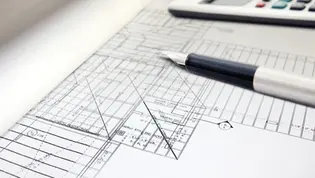Home > Company Tax > VAT exempt and zero-rate VAT difference
Difference between VAT Exempt and Zero-Rated VAT in Taiwan– Complete Guidance
Inside this Article
-
Key Takeaways-: VAR exempt vs. Zero-rated VAT
-
What is VAT Exempt? Examples from VAT-Exempt
-
What is Zero-Rated VAT? Examples from Zero-Rated VAT
-
Practical Scenarios- A Vegetables Company Example
-
Practical Scenarios - A Machinery Exporter Example
-
Conclusion
Overview
Discover the key differences between VAT exemption and zero-rated VAT in our comprehensive guide. The application of VAT can be complex, and Taiwan provides relief through special provisions. Two of the most important are VAT exemption and zero-rated VAT. At first glance, they may appear similar, but in practice they have very different implications for businesses and consumers. This guide explains their definitions, practical effects, and real-world applications.
Key Takeaways
-
VAT exempt vs. zero-rated VAT: Exempt supplies are not subject to VAT, and input VAT cannot be reclaimed. Zero-rated supplies are taxed at 0% but still allow input VAT recovery.
-
Impact on businesses: Zero-rated VAT is generally more beneficial as it allows VAT refunds, while exemptions may increase business costs.
What is VAT Exempt?
VAT exemption means certain goods or services are completely free from VAT charges. Businesses do not charge VAT to customers, but the downside is that they cannot reclaim input VAT on related costs and expenses.
"For more on Taiwan VAT, see our VAT and Uniform Invoice in Taiwan."
Features of VAT-Exempt Supplies
-
No VAT charged on sales.
-
No recovery of input VAT.
-
Businesses must separate exempt and taxable activities for accurate reporting.
-
Examples from VAT-Exempt
-
Sale of land.
-
School textbooks approved by the Ministry of Education.
-
Newspapers, magazines, and broadcasting programs (excluding advertisements).
-
Street vendors selling goods or services.
-
Unprocessed agricultural, fishery, and livestock products.
-
Rice and flour sales, and rice milling services.
-
Fertilizers, agricultural machinery, and related supplies.
-
Gold bars, coins, and pure gold jewelry.
-
Certain imported items, such as international transport vessels and antiques.
Impact: VAT exemption reduces consumer prices, but it often increases business costs since input VAT cannot be reclaimed.
What is Zero-Rated VAT?
Zero-rated VAT applies when goods or services are taxable but at a 0% rate. Businesses still issue VAT invoices, but they can reclaim or refund input VAT.
Features of Zero-Rated Supplies
-
Output VAT rate = 0%.
-
Input VAT can still be deducted or refunded.
-
Particularly beneficial for exporters and international businesses.
Examples from Zero-Rated VAT
-
Exported goods.
-
Services provided in Taiwan but used abroad (export services).
"For more on exporting services, see our Zero-rated VAT on Exporting Services -
Duty-free shop sales to outbound travelers.
-
Goods/services sold to bonded zones or free trade areas for export.
-
International transportation by qualifying foreign carriers.
-
Sales and repairs of international transport vessels and aircraft.
Impact: Zero-rated VAT significantly reduces effective tax costs and improves cash flow for exporters.

Practical Scenarios- A Vegetables Company Example 🥬
Imagine a company that sells fresh produce at the local market:
-
Fresh vegetables: When they sell raw, unprocessed vegetables, the sales are VAT-exempt. But here’s the catch — the VAT they paid on fertilizers or seeds cannot be reclaimed, which quietly increases their costs.
-
Canned vegetables: If the same company processes those vegetables into canned goods, the sales are taxable. This means the VAT paid on cans, labels, and processing equipment can be deducted, lowering overall expenses.
-
Doing both: Since the company sells both exempt and taxable goods, it becomes a “mixed taxpayer.” In practice, that means it has to carefully calculate which portion of input VAT cannot be deducted — a bit like splitting the grocery bill when not everyone eats the same dishes.
👉 This example shows how the same product (vegetables) can lead to completely different VAT treatments depending on how it’s sold.
Practical Scenarios - A Machinery Exporter Example ⚙️
Now picture a manufacturer in Taiwan that builds heavy machinery:
-
Export sales: When the machines are sold overseas, the sales fall under zero-rated VAT. Even though the invoice shows a tax rate of 0%, the company can still reclaim the VAT it paid on steel, spare parts, or shipping services.
-
Why it matters: This refund or deduction of input VAT gives the exporter a huge cost advantage, lowering expenses and freeing up cash flow.
-
Competitive edge: Thanks to zero-rating, the company can offer better prices in global markets without losing profitability — a clear boost to international competitiveness.
👉 This scenario highlights why zero-rated VAT is a powerful benefit for exporters. It turns tax rules into a tool for cost savings and business growth.
FAQ 1: What is the main difference between VAT exempt and zero-rated VAT?
Answer: VAT exempt supplies do not charge VAT and do not allow input VAT recovery. Zero-rated supplies are taxed at 0% but still allow input VAT reclaim.
FAQ 2: Can businesses in Taiwan get VAT refunds on zero-rated supplies?
Answer: Yes, businesses that sell zero-rated goods or services can apply for VAT refunds if their input VAT is higher than their output VAT.
🎯 Conclusion
The biggest difference between VAT exemption and zero-rated VAT lies in input VAT recovery:
-
VAT Exempt: Good for consumers, but businesses cannot reclaim input VAT and may face higher costs.
-
Zero-Rated VAT: Highly advantageous for businesses, especially exporters, since they can recover VAT while still charging 0% on sales.
Businesses in Taiwan should carefully determine whether their activities fall under VAT exemption or zero-rating, maintain proper documentation, and seek professional tax advice to optimize tax efficiency and compliance.
More questions? Let us guide you further




